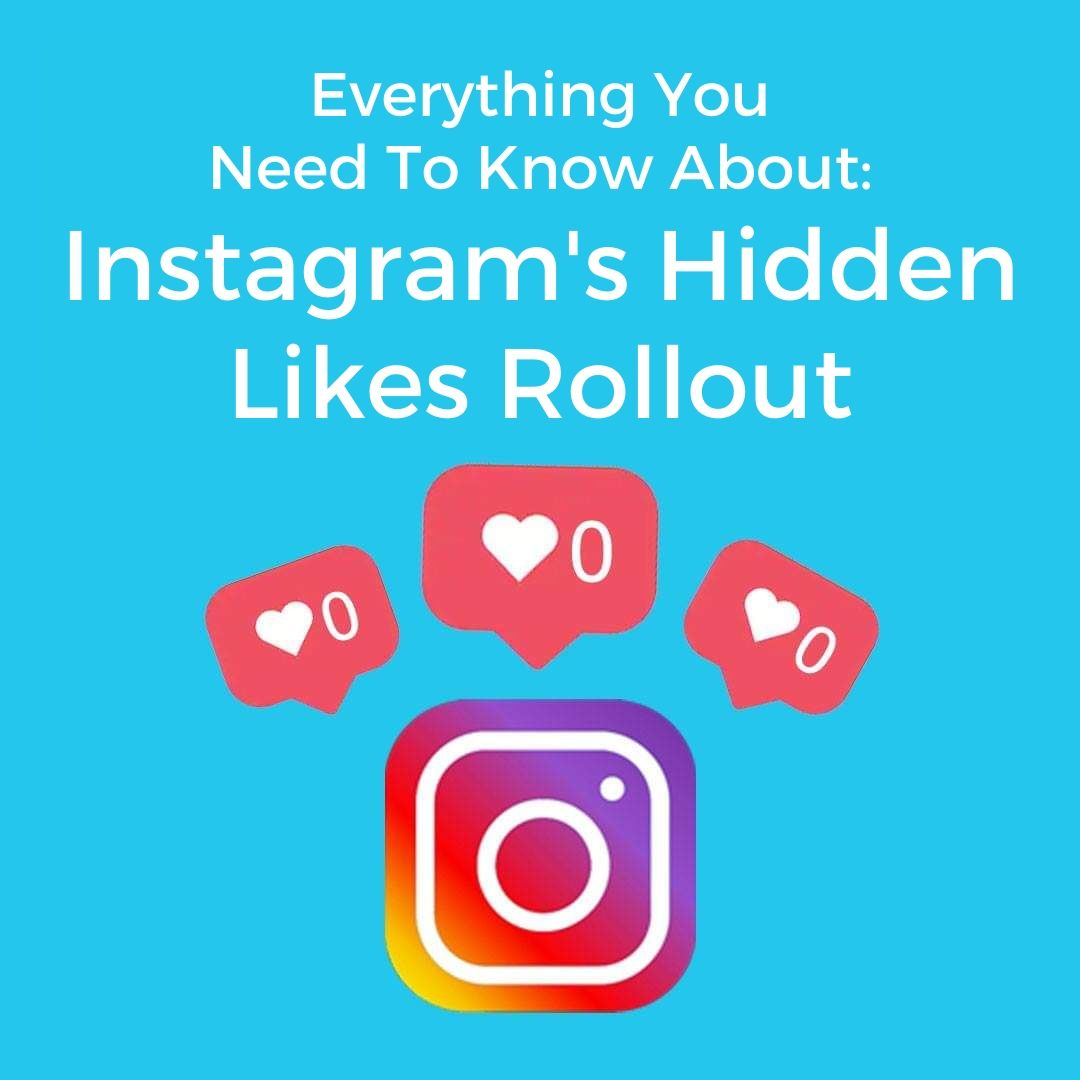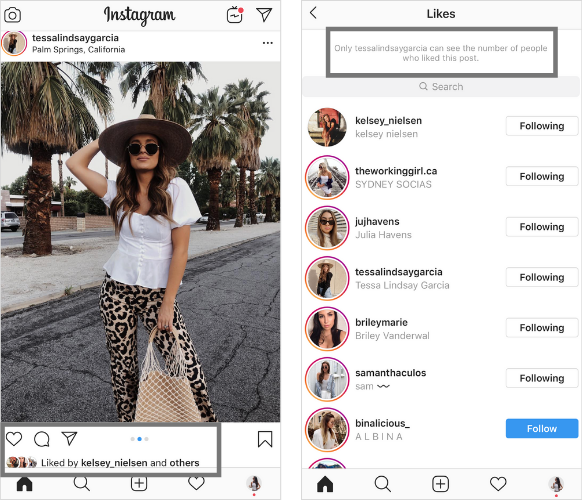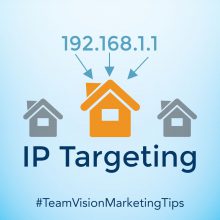If you’ve landed on our Hawaii Marketing Tips blog by accident while searching for Team Vision Marketing, please visit our homepage, creative portfolio or client video testimonials.
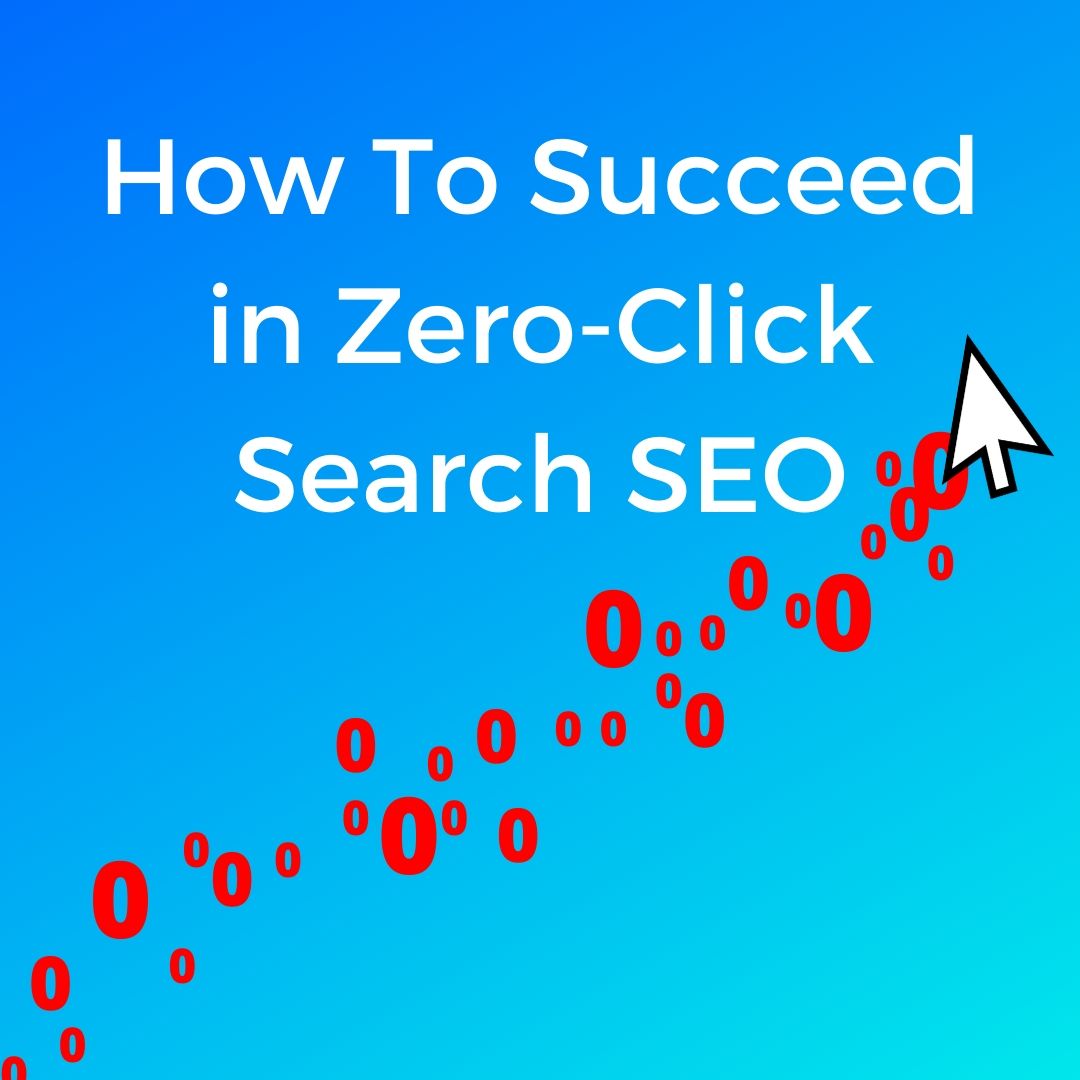
June 17, 2020
How To Succeed in Zero-Click Search SEO
If you’ve landed on our Hawaii SEO Marketing Tips blog by accident while searching for Team Vision Marketing, please visit our homepage, creative portfolio or client video testimonials.
How To Succeed in Zero-Click Search SEO
First of all, what exactly do we mean by Zero-click searches? Zero-clicks means that when people do a Google Search for information, they get the information right on the search results page. They never have to click on any of the organic or paid search results, which means less direct web traffic for your site. As you can imagine, Google realizes that keeping visitors on their SEO results page is of great value (versus having visitors click out to 3rd party web sites), so they are doing everything they can to provide the information people are looking for right there within the search results page. A prime example of this is the expansion of their Google My Business listings over the past couple of years. Visitors searching for your business first see your Google My Business listing which includes your business description, hours of operation, location, phone #, products and services, pricing, and more. For many businesses, such as hotels and attractions, you can also book their offerings right from the Google Search Results page. You get the idea, right? Google is going to keep adding more and more features that keep searchers on their search engine results page. This may eventually make your organic search listing irrelevant.
Last year, about 50% of organic Google searches generated zero clicks. Zero-click searches are on the rise and are causing businesses to receive less impressions, CTRs, and organic web traffic.
According to Spark Toro:
- 34.4% of desktop searches in 2018 resulted in no clicks
- 62.5% of mobile searches produced no clicks in 2018

To stay competitive on the coveted first page, Hawaii businesses must adapt their SEO (Search Engine Optimization) marketing to include optimizing their websites for the Zero-Click Google Rich Features, which are effective for spreading brand awareness and positioning your site as a hub of information. In this article, we will share tips on how you can optimize your website to be featured in Rich Features and take back your top SERP glory!
What are Zero-Click Search Rich Features?
Rich Features are blocks of information that help Google users find the answers they are searching for effortlessly. Zero-click search Rich Features provide the answers to a search query, so users don’t have to click through a bunch of websites to find the desired information—hence the name zero click search.
You may have noticed these Rich Features pop up on the SERP in various formats for key phrases, like “Aloha meaning” (see example below). Voice searches using Siri, Alexa, or the Google Assistant read off of these Rich Features when you ask for specific inquiries, like recipes or trivia questions.

Does That Mean That Zero-Click Rich Features Are Bad For Businesses?
No, zero-click Rich Features can be instrumental in spreading brand awareness and sharing useful information. Rand Fishkin, the founder of SparkToro, said in a Search Engine Land interview that zero-click Rich Features are similar to billboards. Both types of media are hard to collect measurable data but are very useful in building brand familiarity and sharing information.
When Do Zero-Click Searches Or Rich Features Appear On The SERP?
Zero-click searches usually occur for the following types of searches:
- Database Searches
- Dictionary or Encyclopedia Searches
- Map Directions
- Longer tail keyword searches
- Searching for notable people, companies, places, news articles, and more.
- Recipes or “How To” searches
- Asking an FAQ
However, it’s hard to determine which search phrases trigger a Rich Feature to show up. It depends on the search query, the algorithm, and if the other websites on the SERP have optimized their pages for Rich Features. Ahrefs’s report found that only 12.3% of searches produce a Rich Feature. To see the full list of Google Rich Feature formats and where they might appear, click on our previous blog post here.
How Do You Optimize for Zero-Click Rich Features?
First things first….
- Research and list the keywords that show zero-click Rich Features that you currently use in your SEO strategy.
-
- Ahrefs has provided a useful graph of common keywords that are more likely to meet a Rich Feature, see below.
-

- Identify and optimize the web pages that would work best as a zero-click Rich Feature. You can start by asking yourself:
-
- Can my content define any keywords?
- Do we have a top ten list that’s relevant to a keyword search?
- Do we have any material discussing an in-depth comparison?
- Do we have a step-by-step video tutorial?
-
- Target question-based keywords. Zero-click searches usually appear on question queries. Revise your content so that keyword terms are incorporated in the sub headlines and the precise answer is listed right below it.
-
- You can find inspiration and examples on how to word your questions from existing Rich Features, “People Also Asked” boxes and related searches located at the bottom of the SERP.
-
- Create quality content. Of course, the quality and relevancy of your content will help determine if it will be featured as a Rich Feature.
- Make your content more attractive for Rich Features with schema markups.
-
- Schema markups are microdata that create enhanced descriptions of your content. It helps Google understand your content.
- However, using structured data does not guarantee that your content will show up on the SERP.
-
Now, let’s proceed to our top recommendations for zero-click Rich Features:
How To Optimize For Definitions Rich Features
- Start your first sentence by defining the keyword using verbiage like “[keyword] is a….” or “[keyword] means to….”
- For keywords definitions that require further explanation, organize your content using the inverted triangle method: share the most important and concise information first, important details second, and general information last.
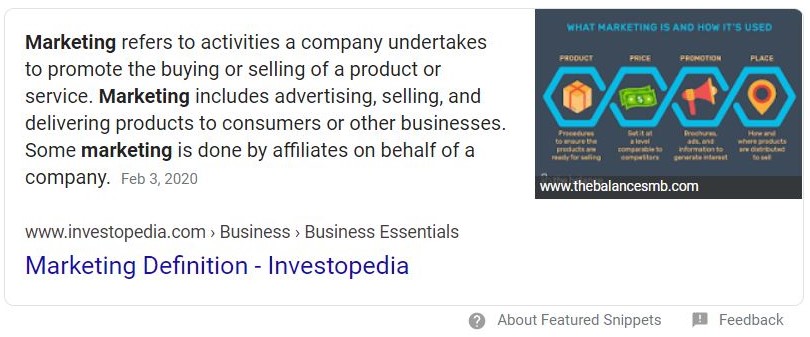
How To Optimize for “People Also Asked” Rich Features
- Sometimes, Google will show alternative questions other users have searched for and provide the answers for them in a dropdown toggle box.
- Write complete questions and answers.
- Use clear, plain language. Google likes to share clear and to-the-point answers.
- Avoid sales language. Remember, people want to find answers to their questions on search, not see promotions.
- Add Q&A schema to your webpages.

How To Optimize For List Rich Features
- Lists work best for searches that are asking for step-by-step tutorials. For example: “Why is SEO marketing important” or “How to win at zero-click searches.”
- Lists can be unordered (bullet points) or ordered (numbered).
- How you structure your lists is very important. Start a list with a title incorporating the keyword in a question format and make the title H2, H3, etc.
- List major points that relate to the search query and make sure the text is readable and clear.
- It can also work for FAQs and “Top Best” lists
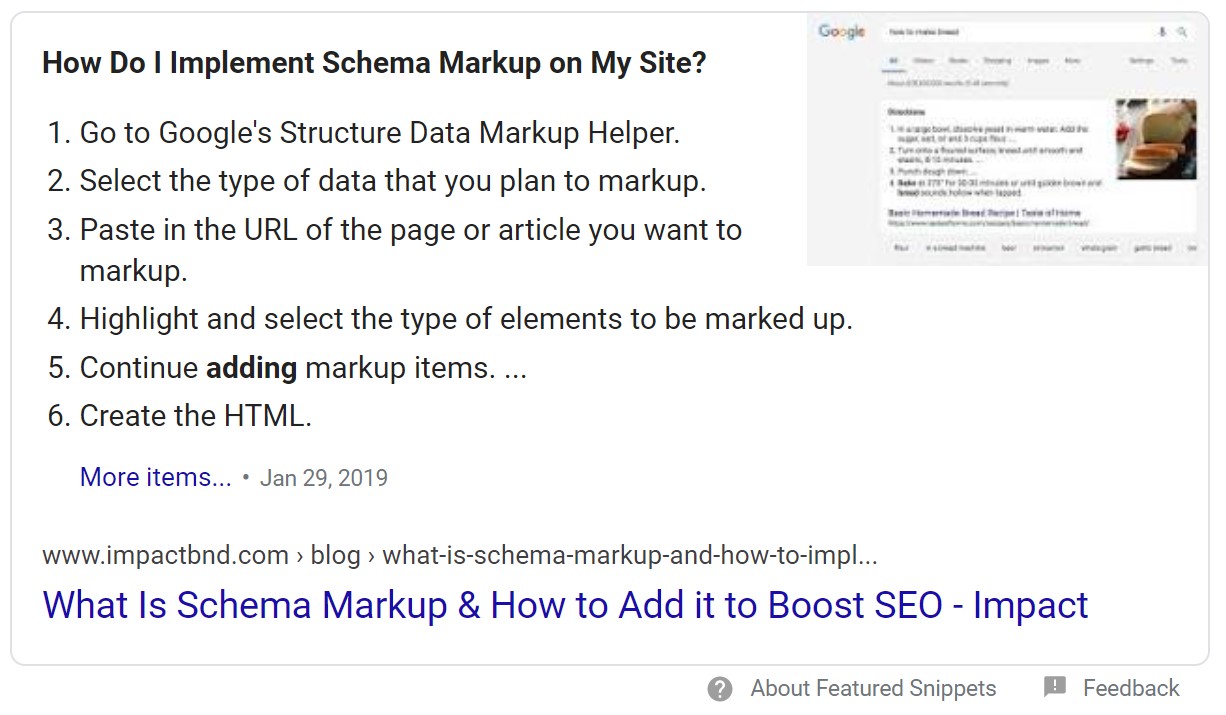
How To Optimize For Comparison Rich Features
- It’s recommended to use tables to map out comparisons. This is because it’s easier for Google to read and searchers to study the pros and cons, or similarities and differences on a topic.
- Similar to how to optimize for a list rich feature, Comparison rich features should have a title incorporating the keyword in a question format above the table and make the title H2, H3, etc.

How To Optimize For Image Rich Features
- Google pulls images from different websites to accompany Definition and Text Rich Features.
- To make your images zero-click SEO ready, add alt text that’s a variation of the headline used for the Rich Feature.
- Also, place the image directly under your Rich Feature optimized text or within content, full of relevant keywords.

How to Optimize Google Business Listing Rich Feature
- This Rich Feature usually appears on a branded search on the right side of the SERP. It displays your business’s contact information, operation hours, location, reviews, photos, and more.
-
- This Rich Feature is a great way to be displayed on the SERP for branded searches.
-
- To use this Rich Feature, you must claim your business’s listing or create one of your own. Then, optimize it by filling in all the required fields about your business with the most recent information:
-
- Business name
- Hours of operation
- Contact information
- Address
- Photos of your brick-and-mortar store, logo, products
- Additional optimization tips:
-
- Frequently create posts about your products, business, tips, offers, etc.
- Collect Google Reviews
- Answer questions and reply to Google reviews.
-
-
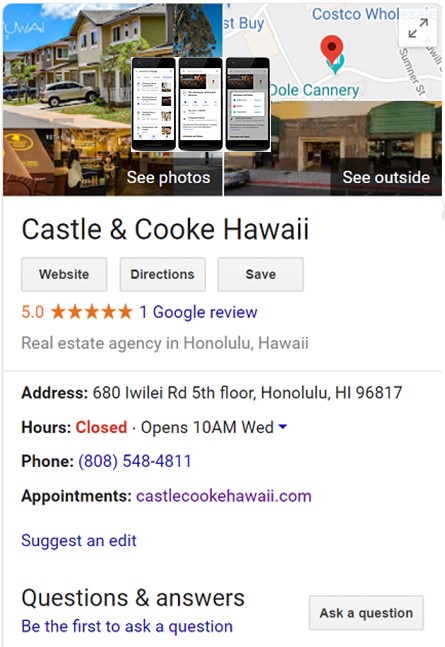
The Takeaway…
With the rise in Zero-Click searches, securing a position on the top of the Google SERP for your Hawaii website has become even more challenging. Although your company will see lower CTRs and organic web traffic, using Google’s Rich Features for Zero-Click Searches can be a valuable organic SEO strategy and it can help generate awareness for your brand and position your website as a credible source of information.
If your Hawaii business needs digital marketing help, please reach out to Team Vision Marketing, Hawaii’s leading advertising and digital marketing agency for over 20 years. We’d love to help!
This is the blog of Team Vision Marketing, a full-service Hawaii advertising agency located in Honolulu, Hawaii and serving clients on Oahu, Maui, Kauai and the Big Island of Hawaii.
Contact Us:
Phone: (808) 536-0416
Email: info@www.teamvision.com
Dolly Moreno, former Director of Sales & Marketing at Honua Kai Resort & Spa on Maui, talks about her experience working with Team Vision Marketing on all of her advertising, graphic design and digital marketing needs.
- How to Select The Best Hawaii Advertising Agency for Your Business
- How AI Will Transform Marketing
- What Is IP Targeting and How Can I Use It for My Business?
- Everything You Need to Know About Instagram’s “Hidden Likes” Test
- Hawaii Social Media Marketing Tips
- How To Succeed in Zero-Click Search SEO
- Social Media Marketing Trends
- Your Guide to Google Rich Search Features
- What to Expect After A Google Broad Core Algorithm Update
- Top 5 Facebook Story Sticker Tips
- Hawaii Search Engine Optimization – SEO Companies
- Top 10 Instagram Story Sticker Tips
- Know The Common Difference: Black Hat SEO vs. White Hat SEO
- 10 Types of Content That Will Boost Engagement
- Video Advertising is Growing – Are You Making the Shift?
- Why You Should Advertise on Facebook Messenger
- Buying Instagram Followers – Is It Worth The Money?
- Top 10 Instagram Hashtag Tips for 2019
- 2018 Social Media Trends: Were We Right On The Money?
- Dreaded Advertising Agency Requests Roundup

November 9, 2019
Your Guide to Google Rich Search Features
If you’ve landed on our Hawaii Marketing Tips blog by accident while searching for Team Vision Marketing or Hawaii Advertising Agencies, please visit our homepage, creative portfolio or client video testimonials for more information. If you’re here to learn more about SEO strategies, please continue reading.
Is your business looking for more effective Search Engine Optimization (SEO) strategies to improve your online presence and search engine results? A critical SEO strategy that many small businesses overlook is Google Rich Search Features or Rich Snippets. Using these enhanced search features can help boost your SEO ranking and drive web site traffic.
What are Rich Search Features?
Rich search goes beyond the typical page title, page URL, and meta description optimizations. It displays information extracted from your web pages that can help make your web site look more attractive on the Search Engine Results Page (SERP) based on specific schema markups, which are snippets of code that help Google’s algorithm read your site’s content. Rich search results can include reviews, images, contact information, carousels or other elements. You may have already noticed other sites using these rich search features, as seen in the comparison below.
Basic Vs. Rich Search Feature


In this article, we provide an overview of our most recommended rich search features that your brand should consider adding to your website. That being said, implementing rich search features on your web pages requires some technical knowledge. Contact us if you would like more information or assistance with your Hawaii SEO needs.
Why Use Rich Search Features?
Rich search features are used to enhance the SERP, making information about local businesses and content more discoverable and easier to access. Companies who take advantage of rich search features are not only able to gain access to prime SERP real estate at the very top of the search results page, they can also have their content displayed in an enhanced designed container to draw attention.
This can help boost your SEO ranking, increase organic click through rates (CTR), and potentially boost conversions.
How to Implement Rich Search Features
Each search feature has its own code to help Google crawl through the information and translate it into its designated feature design. This gives you the ability to control what information will be displayed in the enhanced search feature. Read the introduction to structured data on Google Search Developers to learn the standard guidelines required by Google Search and the specific guidelines for your content type and any enhancements.
It’s important to note that there is no guarantee that your page will appear on the SERP with its assigned specified feature. This is because search features depend on many factors, including the search device type, location, and whether the Google algorithm thinks the feature would provide the best search experience for the user.
Recommended Rich Search Features to Use:
Reviews
Your brand should consider adding the review rich search feature markup because reviews are so influential for conversions. According to a 2016 PEW Research Center study, 82% of Americans read online reviews and 51% trust their accuracy.
Once the structured data is added to your site, it will show up as an aggregated or singled out star rating on the SERP, as seen below. Depending on what code you use, your brand can also feature how many reviews were made, display the percentage of people who gave you high star ratings, and more.
You can also create a review snippet in the Google Knowledge Panel, an information box that appears on Google when you search for entities.

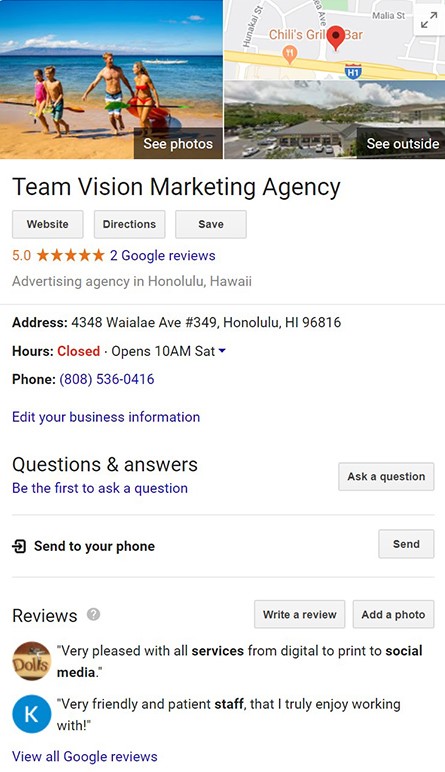
Business Listing
We highly recommend that local Hawaii businesses add schema about your business information, including contact information, business hours, reviews, price scale, address, and so on, to show up prominently on the SERP. Google uses this information to populate a large Knowledge Graph that may appear in Google Search Results or on Google Maps. In addition to adding your business information, you can also add a Call-to-Action button like “Book an Appointment.”
Tip:
- To yield the best results, complete your Google My Business profile to strengthen your local business presence.
- Make sure the information in your local business schema matches up with your Google My Business profile.
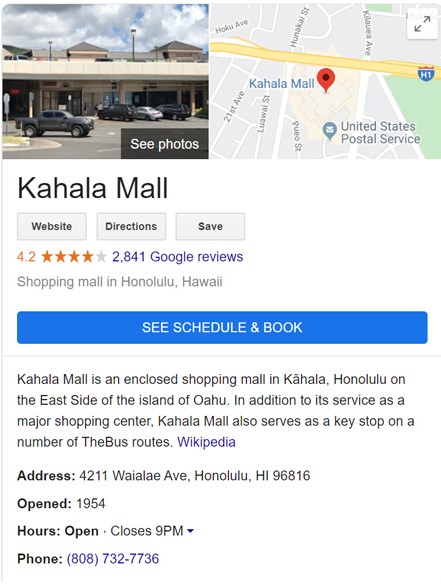
Product
If you manage an e-commerce website, we highly recommend your company take advantage of the Product schema markup. Google will use this information to display detailed product information in rich search results and Google Images, including the product’s price, availability, and review ratings directly on the SERP.
Using this rich results feature can help your brand attract potential customers. We recommend that you regularly update and maintain your product information to attract more potential customers.
Tips:
- Use markup to highlight a specific product, like a bestseller.
- Do not use the product schema markup on a category or list of products.

Top Stories
This feature is ideal to use if your site has a blog page. This feature can show up as a rich result or rich result list, such as headline text and larger-than-thumbnail images, depending on the code you use (see example below).
Tip: When structured data is combined with Accelerated Mobile Pages (AMP), your rich results can provide search audiences with a better experience on mobile by having the content exhibited in a Top Stories carousel, host carousel, and in visual stories. Our team highly recommends adding AMP codes in addition to rich search markups to your web pages because 141.9 billion searches are were made on mobile so far in 2019, according to Statistica.
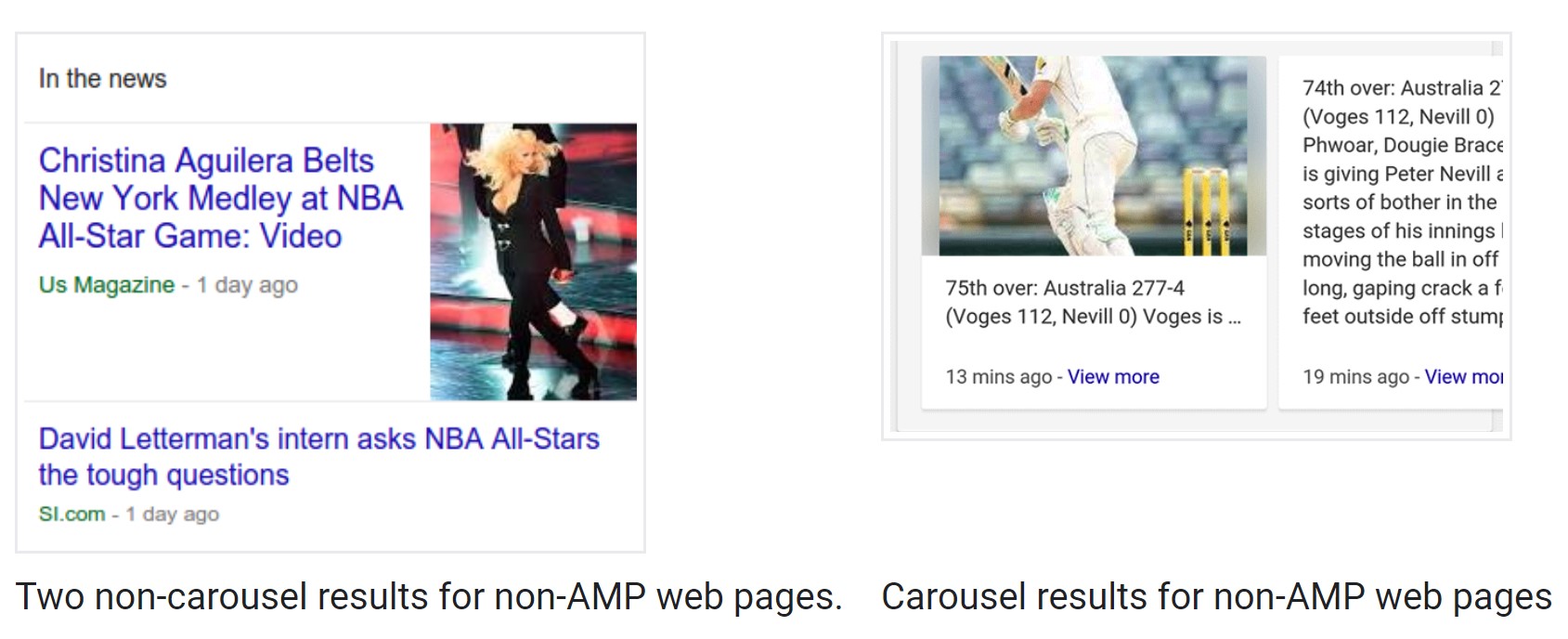
Events
Have an upcoming event? Instead of relying on a Facebook Event or an EventBrite post to spread the word, use the event markup so that users can easily discover your events through Google Search Results and Google Maps. With these code snippets, your brand can share the address, date, time, Call-to-Action button, and more.
Additional Tips:
- Do markup for multiple day events correctly by specifying the start and end dates for the event.
- If there are several different performances or keynote speakers on different days, each with individual tickets, add a separate event element for each performance or lecture.
- Don’t promote non-event products or services as events. For example, “A Hotel Package for 5 nights or more” is a non-event product.
- Don’t promote short-term discounts or purchase incentives, such as: “Cheap trip to Hawaii — buy your tickets now.”
- Do not promote business hours as events.

Social Profile
Use this schema to add your brand’s Facebook, Twitter, Instagram, and other social media profiles to the Google Knowledge Panel. By signaling Google to add your social media profile to the SERP, your channels are getting much desired exposure. As we mentioned in our 2019 SEO Tips blog post, optimizing your social media efforts will drive a lot more traffic to your web site which can positively affect your SEO rankings. Utilizing the Rich Search Features can result in your website gaining more traffic, brand awareness, and social media followers.
Video
Add structured data to your video content to make it easily discoverable on Google’s Search Page. The Rich Search Result can include a description, thumbnail URL, upload date, and duration of your video. You can also add additional structured data to enhance your video preview with a video carousel, which displays multiple videos that you’ve produced.
Tip:
- There is a structured data option available for live stream videos. Once added, your live stream video feed could show a “Live” badge right on the video card during the time it’s live on the search results page.
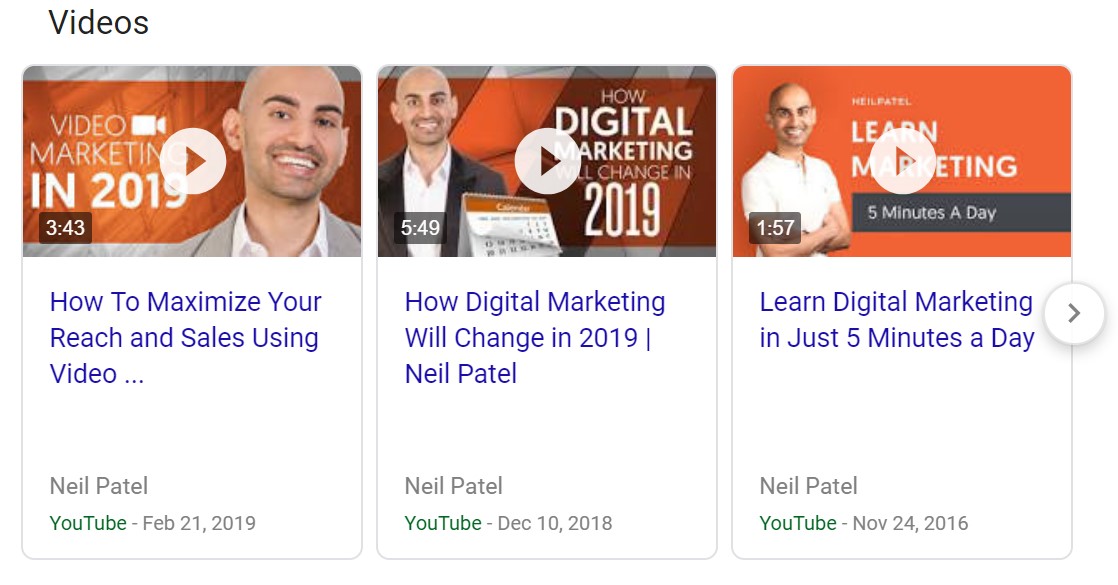
How-To
This markup is great to use if your brand has tutorial blogs or if you have posted a tutorial for your product or services. Use the How-To structured data to alert Google that your content is a How-To post. Depending on how you mark it up, the instructions will show up in either an accordion or carousel format. If properly labeled, your marked up How-To content may be eligible to be featured on the How-to Action for the Google Assistant or voice search, which can help your site reach the right users.
It’s important to note that optimizing for voice search is a trending SEO strategy that Google users find convenient for searches on trivia questions, recipes, how-tos and more. Not convinced? Here are a couple of voice search statistics:
- 50% of all searches will be voice searches by 2020, according to comScore.
- 6 million Americans used a voice-activated assistant device at least once a month in 2017, reported by eMarketer.
To learn more, check out our recent post on Google voice searches.

Logo
Use the Logo markup to provide Google with the correct company logo to use in the rich search results for your company. This markup is also a strong signal for Google’s algorithms to show the logo image in Knowledge Graph displays, as shown in the example below.
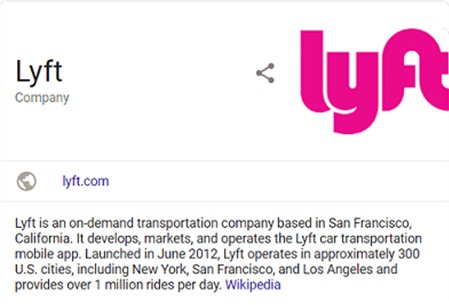
Frequently Asked Question (FAQ) Snippet
Brands can use this type of markup to display their FAQ page in the FAQ Rich Search snippet, which is different than the Q&A snippet. If properly labeled, the FAQ pages may be available as a rich search result on Google Assistant, which means that your content is available for voice searches.
Additional Tips:
- Don’t use the FAQ mark up for advertising purposes.
- Make sure each question code includes the entire text of the question and the answer code includes the entire text of the answer.
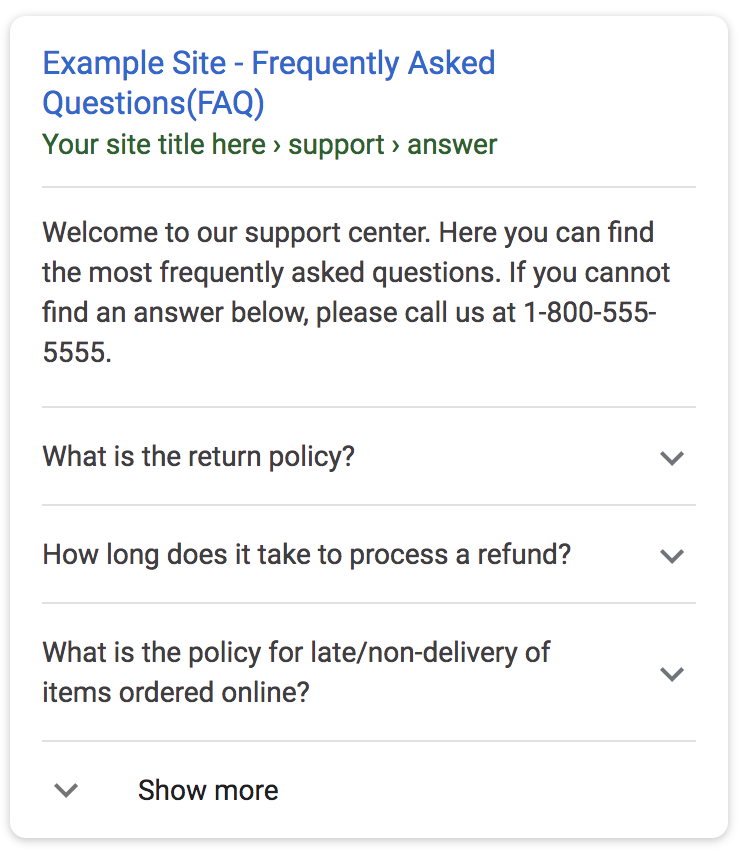
By deploying rich search features, your business can make its website content more discoverable and easier to access on the search results page, making it possible to earn a higher SEO rank and increase organic click-through-rates and conversions. These are just a few of the many ways your brand can beef up your SEO. To learn more, reach out to Team Vision Marketing. We’ve been a leading full-service Hawaii advertising agency, Web design company, and digital marketing firm for over 20 years. Take a minute to view some our client video testimonials and hear directly from our key clients on how we’ve helped grow their businesses, or check out our most successful digital marketing and advertising projects in our portfolio.
Contact Us:
Phone: (808) 536-0416
Email: info@www.teamvision.com
Hear from Harry Saunders, President of Castle & Cooke Homes Hawaii, on his experience working with Team Vision Marketing.
- How to Select The Best Hawaii Advertising Agency for Your Business
- How AI Will Transform Marketing
- What Is IP Targeting and How Can I Use It for My Business?
- Everything You Need to Know About Instagram’s “Hidden Likes” Test
- Hawaii Social Media Marketing Tips
- How To Succeed in Zero-Click Search SEO
- Social Media Marketing Trends
- Your Guide to Google Rich Search Features
- What to Expect After A Google Broad Core Algorithm Update
- Top 5 Facebook Story Sticker Tips
- Hawaii Search Engine Optimization – SEO Companies
- Top 10 Instagram Story Sticker Tips
- Know The Common Difference: Black Hat SEO vs. White Hat SEO
- 10 Types of Content That Will Boost Engagement
- Video Advertising is Growing – Are You Making the Shift?
- Why You Should Advertise on Facebook Messenger
- Buying Instagram Followers – Is It Worth The Money?
- Top 10 Instagram Hashtag Tips for 2019
- 2018 Social Media Trends: Were We Right On The Money?
- Dreaded Advertising Agency Requests Roundup

October 3, 2019
What to Expect After A Google Broad Core Algorithm Update
If you’ve landed on our Hawaii Marketing Tips blog while searching for Team Vision Marketing, please visit our home page, creative portfolio or client video testimonials. If you’re interested in learning more about Search Engine Optimization and SEO, please continue reading.
Ever wonder how Google’s algorithm works, and how it ranks the millions of web site content updates that are published every day? Sadly, we’ll never get to know exactly what factors go into their ranking system, but we do know that the Google team is constantly making to maintain their search engine algorithm. Although these updates usually go unnoticed, several times a year the algorithm goes under a big update called, the “Broad Core Algorithm Update.” With these big updates, you may notice some changes in your search engine optimization (SEO) rankings.
If you’re just hearing about the core update now, don’t worry. In this blog post, we provide a brief explanation on how these updates might affect your web site and what your brand should do after the update to upkeep the success of your online presence.
What is a “Broad Core Algorithm” Search Engine Update?
The broad core algorithm update is one big update that improves Google’s overall algorithm. With these updates, the algorithm changes the weight and importance of its ranking factors, then it reassesses everything on the internet, based on these improvements.
Broad core updates are not as major as the Penguin, Panda, Pigeon, or Fred updates, which were implemented to address specific faults or issues in Google’s algorithm. Instead, these updates are made to help Google provide the most relevant and best information to their audience.
What will happen to my web site’s SEO rankings?
Unfortunately, Google has a reputation for giving vague explanations on what issues the updates will address, so we don’t know exactly what will happen when the changes roll out. The rare times that Google has explained how an algorithm has changed, they were trying to promote a specific behavior, such as mobile responsiveness or the adoption of HTTPS as a required part of Search Engine Optimization (SEO) best practices.
However, you can expect to see notable changes to your web site ranking and web traffic. The improved algorithm will edit the web sites ranked on SERP, prioritizing the most relevant and up to date content. Luckily, Google announced the planned core updates in advance, which allowed companies to make last-minute improvements to their sites Search Engine Optimization strategies in order to lower the chances of any negative changes resulting from the algorithm update.
My web site SEO rank dropped! What should I do?
Remain calm. A shift in your SERP rank after a core update does not mean that Google is penalizing your site, nor does it mean that your web site is low quality. Keep in mind that this broad core update is reassessing your content against all the other content that has published since the last update, making newer and more relevant web pages more discoverable for everyone. Google used a wonderful analogy to describe how the core algorithm update operates:
“…Imagine you made a list of the top 100 movies in 2015. A few years later in 2019, you refresh the list. It’s going to naturally change. Some new and wonderful movies that never existed before will now be candidates for inclusion. You might also reassess some films and realize they deserved a higher place on the list than they had before.”
If your website is bringing in less traffic or is currently ranking lower on the Google search engine results, Team Vision Marketing suggests you do the following:
- According to Google executives, a drop in ranking probably lies in its relevancy factor. We recommend that you regularly post new blogs or publish new content on your web site.
- Look through your content. Make sure you are publishing well-written content that provides quality information and accurate data.
- Go through your web site to see if there are any technical issues, like slow loading pages or bad links, that you need to fix. You should be using Google Webmaster tools to regularly evaluate your site.
- Update and enhance your SEO strategies to make it easier for Google’s algorithm to crawl your website’s content.
Will my web sites SEO ranking recover?
Your ranking and web traffic may or may not improve in the next update. It’s not guaranteed that all your improvements will help your site recover to its former search engine ranking. Improving your web site’s rank on Google is not a one and done type of job. It requires regular maintenance to keep up with the competition. You may want to check out our recent Hawaii SEO Tips blog post, designed to help local Hawaii businesses improve their Search Engine Optimization strategies.
My web site rank went up! Will it stay like this forever?
That will depend on you. SEO best practices are constantly changing over time. Team Vision urges all brands, including the ones who are currently ranked at the top of the SERP, to regularly make improvements to their web site and their SEO. Regular web site maintenance is the key to sustaining your web site’s successful online presence.
To conclude, Google’s broad core algorithm update ensures that it’s providing the best information for everyone. The core update may or may not affect your online presence, but all brands should actively publish new content and practice webmaster approved SEO tactics. If you are a local Hawaii business that needs assistance with your advertising, web development and/or strengthening your Search Engine Optimization (SEO) efforts, reach out to Team Vision, a Hawaii full-service Hawaii advertising and digital marketing firm. We have designed and built web sites, and provided SEO management services for Hawaii clients on O’ahu, Maui, Kauai, Lana’i, and the Big Island of Hawai’i.
Contact Us:
Phone: (808) 536-0416
Email: info@www.teamvision.com
Hear from Harry Saunders, President of Castle & Cooke Hawaii, on his experience working with Team Vision Marketing.
- How to Select The Best Hawaii Advertising Agency for Your Business
- How AI Will Transform Marketing
- What Is IP Targeting and How Can I Use It for My Business?
- Everything You Need to Know About Instagram’s “Hidden Likes” Test
- Hawaii Social Media Marketing Tips
- How To Succeed in Zero-Click Search SEO
- Social Media Marketing Trends
- Your Guide to Google Rich Search Features
- What to Expect After A Google Broad Core Algorithm Update
- Top 5 Facebook Story Sticker Tips
- Hawaii Search Engine Optimization – SEO Companies
- Top 10 Instagram Story Sticker Tips
- Know The Common Difference: Black Hat SEO vs. White Hat SEO
- 10 Types of Content That Will Boost Engagement
- Video Advertising is Growing – Are You Making the Shift?
- Why You Should Advertise on Facebook Messenger
- Buying Instagram Followers – Is It Worth The Money?
- Top 10 Instagram Hashtag Tips for 2019
- 2018 Social Media Trends: Were We Right On The Money?
- Dreaded Advertising Agency Requests Roundup


